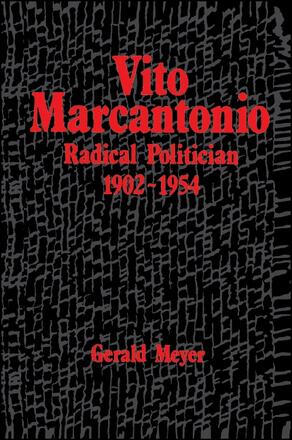
Vito Marcantonio
Radical Politician, 1902-1954
Alternative formats available from:
Explores Vito Marcantonio’s unique status as a radical politician from New York City.
Description
This is the first study to fully explore Marcantonio's unique status as a radical politician who, despite massive opposition, held high public office for fourteen years. As congressional representative to Harlem, he became the leader of the most important third party in the United States, the American Labor Party, and achieved national stature as a spokesman for the left.
The book demonstrates Marcantonio's transcendence of a number of American truisms. Meyer explores the efficiency of Marcantonio's political machine, the unusual alliance of his two major political bases (East Harlem and El Barrio), and his open relationship with the Communist Party.
Reviews
"…[a] terrific book … A scholarly study, the book is also replete with anecdotes that make it not only intellectually satisfying, but engaging in ways usually reserved for popular biographies … [it] is an important book that will continue to greatly benefit its readers, especially those interested in the intersection of radical and electoral politics, but also those interested in New York City's political history. " — Science & Society
"Provides fresh revelations about the nature of Marcantonio's support in the Italian-American and Puerto Rican communities, and is most insightful, historically and ethnographically. It gets to the heart of 'pre-political' issues, seen through the optic of culture. It makes a fresh contribution to the history of radicalism, as well as to ethnic history and the history of New York City. " — Paul Buhle, Director, Oral History of the American Left, Tamiment Library, New York University